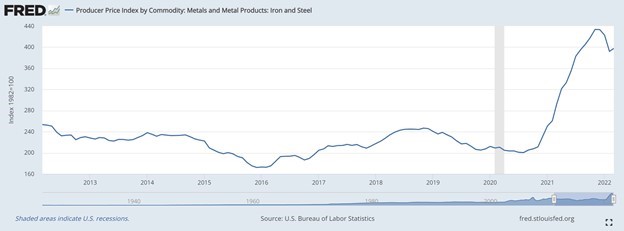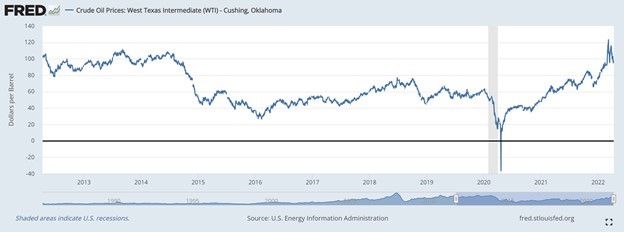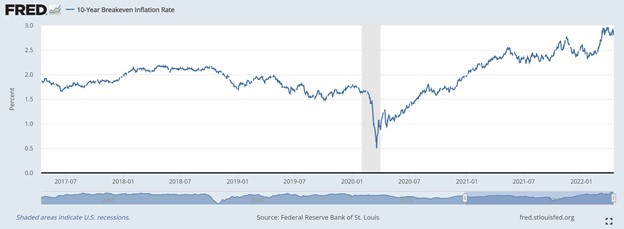By using our website, you agree to the use of cookies as described in our Cookie Policy
Blog
Commodities and the Economy
We’ve seen a sharp rise in the prices of many commodities over the past two years. Two examples of this are metals prices and oil prices.

Iron and steel prices didn’t dip much with the onset of the pandemic, but took off at the start of 2021 before easing somewhat since the beginning of 2022. The price pattern fits with the idea that increased demand for goods relative to services, along with supply chain issues, combined to push prices up.

Oil is a different story. Prices went negative at the beginning of the pandemic, recovered to their previous levels, then rose steadily in 2021 before spiking this year. Increased demand amidst the global economic recovery is certainly a factor, but so are investment choices—after the 2014 crash in oil prices, companies have been reluctant to invest in oil production in case the current high prices prove to be transitory.
If the causes of commodity price changes come from multitude of factors, the effects are also wide ranging. JPMorgan’s Jim Glassman notes that many retail consumers are shielded from commodity price fluctuations, due both to the practice of purchasing raw materials via long-term futures contracts, as well as the fact that raw materials simply are a small component of the cost of many goods. For example, a man’s dress shirt consists of only about $1 worth of cotton; even automobiles contain on average only $1000 in metals, which is about 3% of a car’s retail price.
Oil price changes, as we’ve all witnessed, tend to flow directly into the broader economy. Demand for oil is fairly inelastic in the short run, so unless OPEC or other producers ramp up production, we experience pain at the pump.
Glassman examines possible implications of commodity price surges for the broader economy. Are we reliving the 1970s, when oil shocks led to stagflation? Or is this more like the early 2000s, when commodity price increases were largely offset by a rise in productivity, particularly in China?
Glassman’s answer is that neither historical example is a close fit for present day challenges. The US economy is less dependent on oil than it was 50 years ago, but production appears to be more inflexible. Some pandemic bottlenecks may ease, but consequences of Russia’s invasion of Ukraine may linger. Industries that are highly dependent on transportation or raw materials may face a challenging decade, but Glassman argues that most businesses will be affected more by Fed reaction than by commodity price changes.
In other words, if higher commodity prices spill over into core inflation, keeping it at an unacceptably high level, the Fed may need to become more aggressive about raising interest rates. At the moment, the Fed is looking to normalize rates between 2% and 3% as it tries to negotiate a soft landing for an overheated economy; like everyone else, we’ll have to wait and see if the Fed can pull off this balancing act without tipping the economy into recession.

So far, despite high expected inflation for this year, the 10-year breakeven inflation rate is still under 3%. But the greater test will come over the remainder of 2022, as we see how inflation, interest rates, and unemployment respond to continued rate hikes.
###
JMS Capital Group Wealth Services LLC
417 Thorn Street, Suite 300 | Sewickley, PA | 15143 | 412‐415‐1177 | jmscapitalgroup.com
An SEC‐registered investment advisor.
This material is not intended as an offer or solicitation for the purchase or sale of any financial instrument or investment strategy. This material has been prepared for informational purposes only, and is not intended to be or interpreted as a recommendation. Any forecasts contained herein are for illustrative purposes only and are not to be relied upon as advice.
‹ Back










